National Service, Local Action: Stories from AmeriCorps
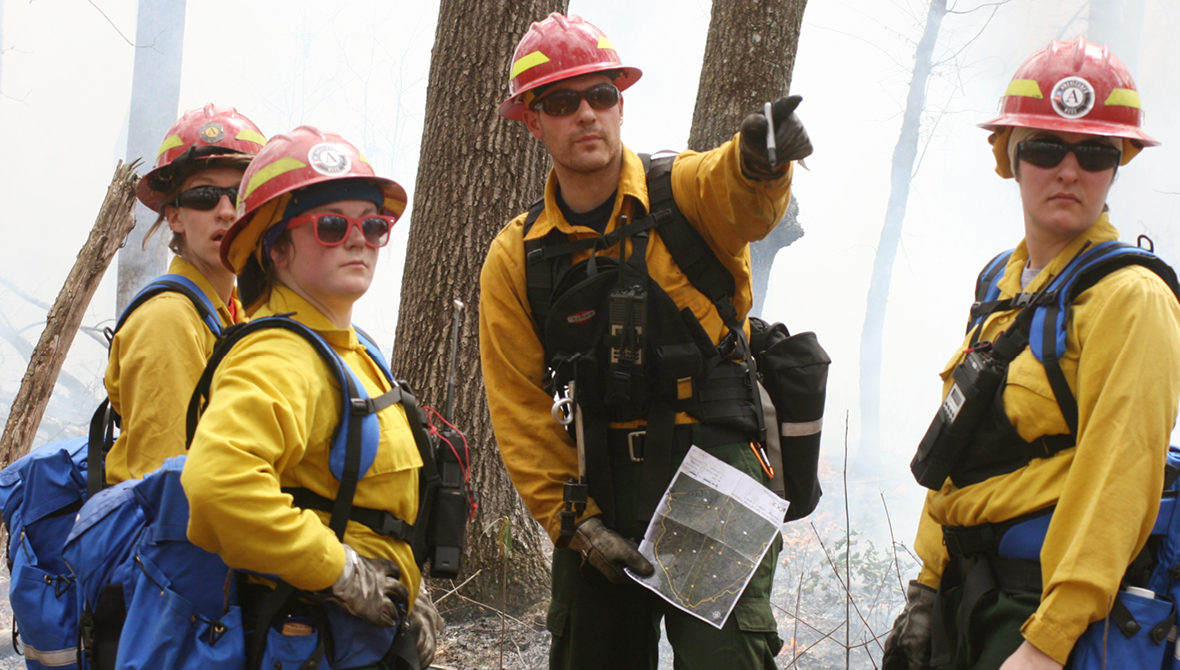

Mahatma Gandhi famously said that “the best way to find oneself is to lose yourself in the service of others.” Service reveals to people the power they have within themselves to change the trajectory of another’s life — and in so doing change their own. Service is part of our American fabric, dating back to the first volunteer firefighters in the 18th century and the launch of the Red Cross, YMCA, and other charitable organizations in the 19th century.
AmeriCorps embodies Americans’ commitment to serving others. Building on the foundation of domestic service programs established under presidents from John F. Kennedy to George H. W. Bush, President Bill Clinton founded AmeriCorps in 1993 to harness the energy and ingenuity of citizens to improve communities and get things done for America.
AmeriCorps’ mission is about activating our American community in service of the countless communities we belong to as individuals. By blending national and local programming and impact, we promote a stronger civil society. One that is built on knowing each other better.
“By blending national and local programming and impact, we promote a stronger civil society. One that is built on knowing each other better.”
This is a human story, so we believe it is best told by and through the people themselves. What follows are three stories of Americans who recognized a need in their national community and stepped forward to lead community change, spurring countless others into action where it’s needed most.
In just the first month after Hurricane Harvey devastated communities in Texas and Louisiana in the summer of 2017, the Corporation for National and Community Service (CNCS) deployed more than 1,800 AmeriCorps and Senior Corps members to areas impacted by the storms. In Texas, more than 800 AmeriCorps members supported recovery activities. Their service included volunteer and donations management, disaster survivor assistance, operations and logistics, damage assessments, and muck and gut operations, working alongside local response organizations.
Caleb Bell was deployed from Conservation Corps Minnesota & Iowa (CCMI). He was excited because disaster relief work was the reason he joined AmeriCorps.
“Houston was definitely different than I expected. It was a shock at first to see how much devastation the flooding caused,” said Bell. “In the neighborhood where we served, there were people who had experienced four or five feet of water in their homes. The people we helped hadn’t started mucking and gutting at all; the water had just receded a few days prior to our arrival.
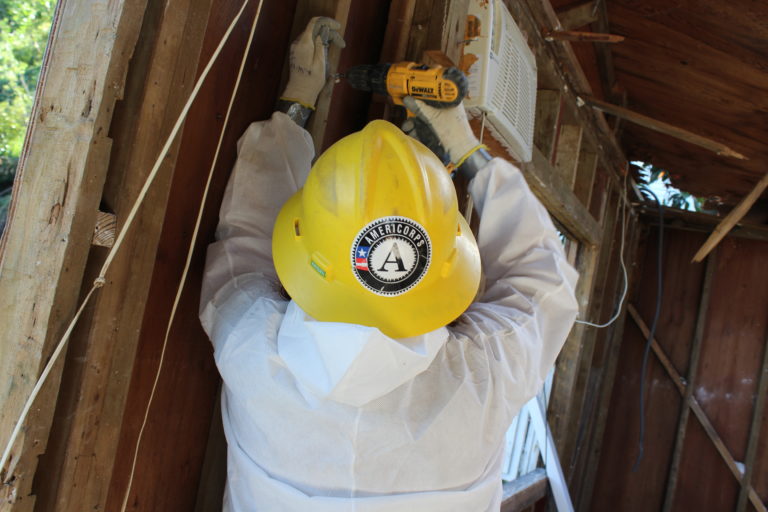
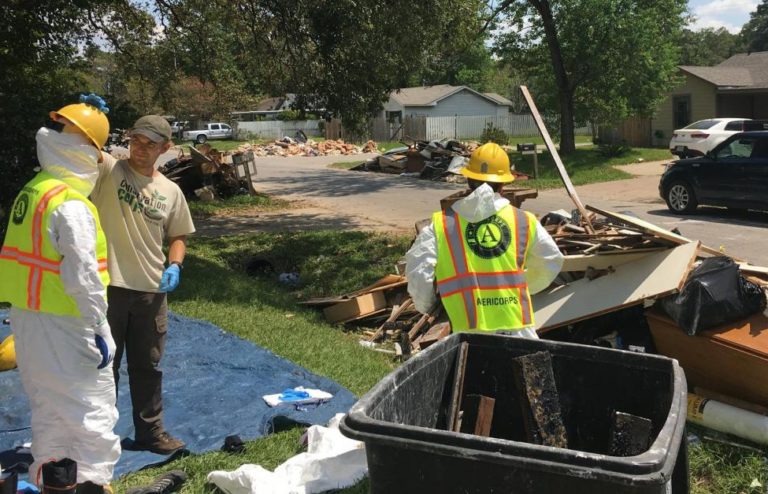
“I was in one house that really needed help. The homeowner had belongings in every room, floor to ceiling. At first, it was extremely difficult to work on her home. I had a really hard time believing what I was seeing, and she had a hard time letting things go. The more I worked on the home and talked to the owner, the easier it became to help her. It really showed how 10 strong backs and three long days can really change someone’s life. In the case of this survivor, she would never have been able to remove everything herself. I think that everyone should take the opportunity to help with disaster response if they have the chance. This deployment has definitely been life-changing for me.”
Caleb Bell is hardly alone in his experience: since 2011 CNCS has responded to over 500 state and federally declared disasters. AmeriCorps and Senior Corps have deployed over 13,000 national service members and engaged more than 1 million volunteers in disaster response, acting as a force multiplier to provide key resources and significantly expand the capacity of existing organizations on the ground. Whether responding to forest fires, floods, hurricanes, or tornadoes, AmeriCorps members — through NCCC, FEMA Corps, and other programs — often arrive on Day One and typically stay in communities for substantial periods of time, not just in the immediate aftermath of a disaster.
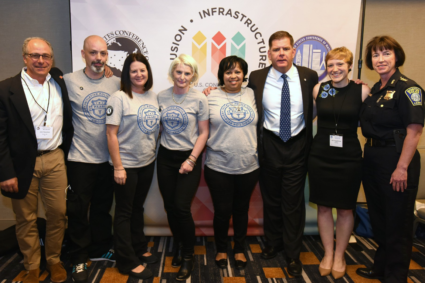
In response to the opioid crisis ravaging communities across the nation, CNCS has significantly increased its work and investment in opioid abuse prevention, education, and recovery programs. Nonprofit groups, faith-based and community organizations, hospitals and health clinics, and state and local agencies across the country are using AmeriCorps members to provide drug abuse education, serve as recovery coaches, build capacity for anti-drug organizations, provide screening and assessments, establish state and local anti-drug coalitions, and prevent relapse, recidivism, and more.
In Massachusetts, for example, 22 AmeriCorps members serve as Recovery Coaches and Program Coordinators in police departments across the state through the Police Assisted Addiction & Recovery Initiative (PAARI). These AmeriCorps members help opioid users access treatment and recovery services, prevent opioid overdose deaths, and build the capacity of non-arrest law enforcement programs.
Erin Berecz works as a PAARI AmeriCorps Recovery Coach in the behavioral health unit of the Lynn, Mass. Police Department. She connects with people in her community who are struggling with substance use disorder and guides them through the treatment and recovery process. Erin has a deep understanding of overcoming these challenges because she has navigated this path herself, having struggled with alcohol addiction for about 15 years.
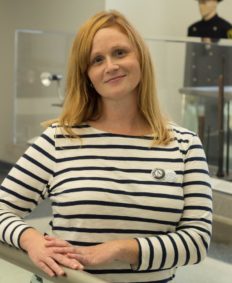
Erin reached her recovery goals through hard work and the guidance and inspiration of her parents and young sons. But she realizes that not everyone has the strong support network she had, so she works with PAARI to offer help and hope to those who might not have anyone else. She is on the ground in critical moments, coaching people in her community who have just come forward seeking help for their substance use disorder or have recently overdosed. She sees addiction both through the eyes of someone in long-term sobriety, and, as a mother, finds herself relating strongly to the family members of her mentees as well.
Since October 2017, PAARI members have provided support and information to more than 3,400 people struggling with a substance use disorder and their loved ones. And nationally, over the past two years, more than 1,800 AmeriCorps and Senior Corps members have been deployed to projects in all 50 states focused on prevention, education, and recovery, making a tremendous impact in countless communities and across the nation.
The narrative that many of us read about Flint, Mich. is one of blight, unemployment, poverty — and lead in the water. But there’s a much more positive — often untold — story in Flint. A story of neighbors helping neighbors, of people of all backgrounds serving their community, and of alignment between the city, nonprofit partners, funding partners, schools, and residents to champion service as a strategy to reinvent the community. AmeriCorps has been integral to that story.
In 2011, leaders from Flint’s nonprofit community, with support from the Charles Stewart Mott Foundation, established the Flint National Service Accelerator based on a growing sense that with more coordination, training, and community support, both the number and the impact of these hardworking service members could be much greater. The Accelerator provides the capacity-building and technical assistance that local nonprofits need to successfully apply for, recruit, and train AmeriCorps members.
Through the Accelerator, nonprofit organizations are coordinating to more effectively address community needs. National service members are tutoring and mentoring students, maintaining the city’s parks, improving community safety, and eliminating blight. In 2016 the Accelerator supported AmeriCorps’s NCCC teams who came to Flint to assist in responding to the city’s drinking water crisis. Today, AmeriCorps members continue to help with recovery efforts, serving in Flint schools to support students’ and families’ long-term needs, supporting neighborhoods with resident outreach, and acting as a resource to nonprofits through the newly created Flint Recovery Corps.
The Accelerator is expanding the national service presence in Flint, creating new programs and positions to address issues. Starting in 2011 with 25 members and one Flint-based AmeriCorps program, the community now has over 200 AmeriCorps members and six Flint-based AmeriCorps programs, plus three Senior Corps programs that are meeting emerging needs in education, safety, and most recently, opioid abuse prevention.
According to Jenny McArdle, the Chief Service Officer of Flint, “The service provided by engaged citizens is critical if the city is to become the place we’ve all envisioned it being. We also believe the experiences that are shaping the members and volunteers will create the next generation of civic-minded leaders who will help to determine our future.”
AmeriCorps programs do more than move communities forward; they serve their members by providing pathways to opportunity as they enter the workforce. AmeriCorps places thousands of people into intensive service positions where they learn valuable skills, earn money for education and develop a strong sense of civic responsibility.
A 2016 report by CNCS documented the long-term outcomes of AmeriCorps alumni — showing that service has an effect on more than just the communities served, but also on the AmeriCorps members themselves.
The alumni reported that there were substantial benefits to participating in AmeriCorps programs, including helping them figure out the next steps of their careers, and increasing their ability to work with others and respond to unexpected challenges. In fact, an overwhelming 90 percent of AmeriCorps alumni agreed or strongly agreed that they could solve difficult problems, accomplish goals, handle unexpected events and unforeseen situations, remain calm, and identify multiple solutions. AmeriCorps alumni also reported having high levels of cultural competency and the ability to work with diverse groups of people (Corporation for National and Community Service, 2016) — extremely important skills in an increasingly diverse country and world.

I began my life in service immediately after graduating from college. I moved cross-country to spend a year working for the Jesuit Volunteer Corps (JVC) at St. Anselm’s Immigrant and Refugee Center. I spent most of my time working with the counseling program, helping young people from South East Asia assimilate to their new home in California. JVC was an exceptionally formative year in my early life and it ignited in me a lifelong passion for service. Since then, I’ve spent the last three decades working toward the day when every young person would be challenged and given the opportunity to do a service year.
Today, more than 333,700 people serve our country and the world through AmeriCorps, Senior Corps, the Jesuit Volunteer Corps, YouthBuild, and the Peace Corps annually. That is real progress, but it is not enough. We can’t stop until every person in this country is challenged and given the opportunity to spend a year in service. By working together, sharing our stories, and investing in data-driven and cost-effective programs like AmeriCorps, we can make this dream a reality. And the result will be a nation and a world that is more tolerant, more connected, and more just.
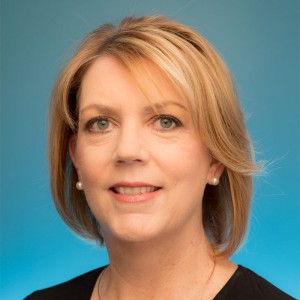
Corporation for National and Community Service. (2016). AmeriCorps Alumni Outcomes Study. Washington, D.C.: Corporation for National and Community Service. Retrieved from https://www.nationalservice.gov/impact-our-nation/evidence-exchange/AmeriCorps-Alumni-Outcomes